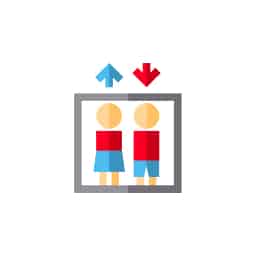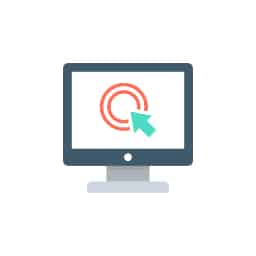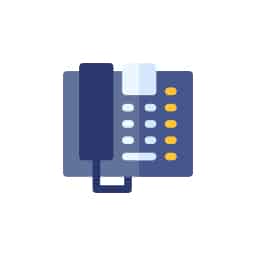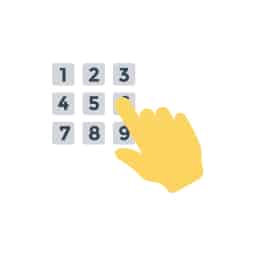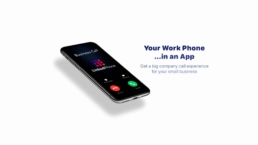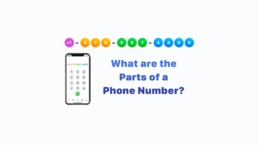The Evolution of Telephone Technology: A Brief History
Who Invented the First Telephone?
While Alexander Graham Bell is typically credited with the invention of the telephone, he was just the first to receive a U.S. patent for it. Predecessors were the Italian innovator Antonio Meucci, who invented the first simple telephone in 1849, and Charles Bourseul of France in 1854, who also came up with a very early example of the technology.
Over the last couple of decades, phones have gone from a humble yet essential tool in our communications toolbox to something that their inventors never could have envisioned: an all-in-one life management, entertainment, and virtual business device, without which most of us would be crippled in our ability to navigate and engage with the modern world.
But just how did we get here? How did we go from the simplest of inventions to one of the most complex, versatile, pervasive, and powerful devices ever known? Come with us for a quick tour through the history of the telephone and the evolution of telephone technology, from the liquid transmitter to the iPhone 14, and learn about what’s happened from 1876 (and before) until today.
LinkedPhone serves the small business community with local & toll-free business numbers that work with your cell phone, desk phone, & laptop. Add a 2nd phone number to your cell phone with our mobile app. Talk & text with clients on the go. Add team members too. Finally break free from the desk phone. At LinkedPhone, freedom rings! 🔔📱💻☎️
Precursors to the Telephone
Prior to the telephone’s invention, there were a tremendous number of active and experimental technologies in the field of wired and wireless communication. The simple telegraph was the most common, with wires criss-crossing the United States strung up by the Western Union Telegraph Company. Telegraph lines ran alongside electrical wires, themselves a relatively new phenomenon, in the latter half of the 19th century.
While Alexander Graham Bell is typically credited with the invention of the telephone, he was just the first to receive a U.S. patent for it. Predecessors were the Italian innovator Antonio Meucci, who invented the first simple telephone in 1849, and Charles Bourseul of France in 1854, who also came up with a very early example of the technology.
Early versions of radio technology also existed at the time. However, it would take some time for the devices to become sufficiently powerful, small enough to be usable, and for a network of transmitters and receivers to be developed in order for radio to become the ubiquitous medium for one-way and two-way communication that it would, long beyond the invention of television.
Invention of the Telephone
Many large companies and entrepreneurs resented the monopolistic stranglehold that Western Union held over telegraph communication. One such individual, an attorney from Boston named Gardiner Greene Hubbard, future father-in-law of inventor Alexander Graham Bell, provided funding to the young entrepreneur to create a system for transmitting multiple telegrams along the same wire at the same time via means of varying the frequency of transmissions. It was in the course of work on this multiple telegram system that Bell would discover, quite by accident, the means to transmit sound over electrical wires.
The first patented telephone wasn’t actually a telephone at all. While working on what they were calling the “harmonic telegram”, Bell and his assistant, Thomas Watson, accidentally triggered the reproduction of sound over the wire between two linked devices. Bell had been quietly working to develop something akin to a telephone for some time, but this was the breakthrough he needed to make the device a reality. Before long, he would speak the famous first words via telephone to Watson from one room to another: “Mr. Watson, come here–I want to see you.”
By an incredible coincidence, Bell and another inventor, Elisha Gray, had both created the invention that would lead to the telephone (Bell called his the “liquid transmitter”) right around the same time. The two men both rushed to the patent office to register the invention, with Bell arriving just hours before Gray. The men then became embroiled in a legal dispute over who had the rights to the invention, but since both devices were substantially similar, the fact that Bell had gotten there first meant the patent would go to him.
Telephone History Timeline
There are a few significant milestones in the timeline of the telephone, some of which came quickly, others which took decades to develop or take hold. Let’s take a look at a few of the more significant moments in telephone history, and some different kinds of phones throughout the years.
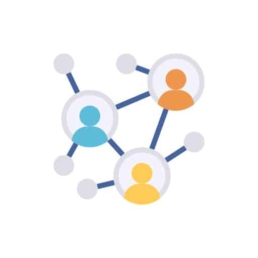
1876-1880: The First Telephone Network
By 1877, just a year after Bell patented the telephone (on March 7, 1876), the first regular telephone line was completed, from Boston to Somerville, Massachusetts. Just 3 years later, by the end of 1880, there were almost 50,000 telephones in the United States alone.
Although Bell started his first company, the Bell Telephone Company, in 1877, the nascent industry grew by leaps and bounds. Bell’s control of the intellectual property and patents allowed him to buy out telephone service competitors which sprang up, leading to the mergers which formed the American Telephone and Telegraph Company, later simplified to AT&T.
Ironically, it was the attempt to break Western Union’s monopoly on telegram service which led to a complete monopoly on the first telephone service. AT&T would control all long-distance telephone service until the 1980’s, when the U.S. Justice Department ordered AT&T to break up into regional and local providers (the so-called “Baby Bells”) in a landmark antitrust lawsuit, and to allow more robust competition.
1880-1890: Telephone Exchanges, Pay Phones, and Phone Books
The very first telephone calls on the fledgling service had to be connected directly between subscribers; phones and telephone wire were sold in pairs. The next development was of telephone exchanges, which would require an operator to physically switch a wire connector between one connection and another. In 1889, an undertaker named Almon B. Strowger invented a system to allow a central exchange to “switch” calls between different pairs of subscribers using relays and sliders. The system was so simple and effective that it remained in use until digital switches began to replace analog ones over 100 years later.
Initial pay phones were not as we think of them today, since you would first place the call, then pay for the time used afterwards. Of course, even pay phones have gone the way of the dodo since the advent of smartphones. In 2018, there were fewer than 100,000 payphones remaining in the U.S., and many of those were disabled or otherwise non-functional.
The first phone book was published in New Haven, Connecticut in 1878, and consisted of one page with just 50 names and no numbers. Calls were connected by operators in telephone exchanges, and it would be a few years before further advances would allow people to call each other directly. The first Yellow Pages branded directory of businesses categorized by products and services provided appeared in 1886.
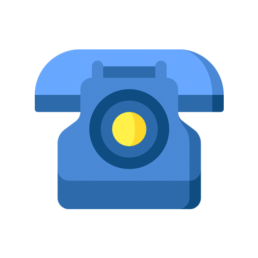
1890-1900: Pulse Button & Rotary Dialing
One of the first methods for direct dialing from one telephone to another was known as pulse dialing. You might recognize this from old movies, when someone would lift up the telephone receiver and tap the receiver or a button on the device in certain patterns, representing parts of a phone number, which would allow a direct call to be placed via automated exchanges. In 1896, an associate of Almon Stowger invented the rotary dial, which would allow the pulses to be recreated by turning a dial on the phone to the desired numbers in sequence.
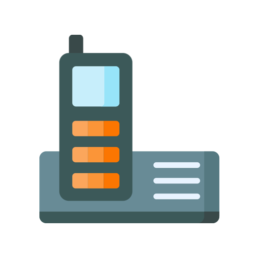
1960s-1980s: Touch Tone, Cordless, and the First Cell Phones
Phone technology didn’t advance much during the first half of the 20th century. Other technologies like radio and television made huge strides during that time, but it wasn’t until the 1960s that the first touch tone phones became available on the market. Researchers had been experimenting with dual-tone multifrequency signaling since the 1940s, making little headway. In 1963, the first commercially-viable tone dialing phones went on the market, introduced by AT&T as Touch-Tone dialing, but which were slow to replace rotary phones. It wasn’t until the 1990s that Touch-Tone phones began to take over a majority of market share from rotary phones.
The next evolution in telephone technology standards came with wireless, or cordless phones, followed in quick succession by cell phones. Cordless phones were approved by the Federal Communications Commission (FCC) in 1986 to operate on the 47-49 megahertz frequency of the radio spectrum, and in 1990 expanded this to the 900 MHz range. Digital cordless phones entered service in 1994, along with Digital Spread Spectrum (DSS) a year later, developments intended to increase security and reduce the ability of others to eavesdrop on calls. Later the FCC expanded these types of phones to the 2.4 and 5.8 gigahertz/GHz frequencies.
The first portable phones were bulky radio-controlled devices designed for use in vehicles (remember the bag phone?), and entered use as early as 1946. However, these early units never saw widespread use. By 1980, the necessary radio frequencies for the modern cellular network had become commercially available, and handheld cell phones, although quite expensive initially, started to become more common.
The first mobile phone was the Motorola DynaTAC 8000X, introduced by Martin Cooper, a senior engineer at the company, in 1973. Just the handset weighed 2.5 pounds, featured a staggering 30 minutes of talk time, six hours of battery standby, and had enough memory to store up to 30 contacts and their phone numbers.
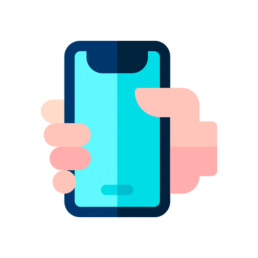
1990-2020s and Beyond: Smartphones Take Over the World
It goes without saying that smartphones have become an integral part of life for billions of people all over the world. Now it seems like they’ve always been there, and for the youngest among us, the humble landline phone is little more than an obscure relic of the past. A few noteworthy types of telephones in the transition from simple cell phone to the endlessly-evolving smartphone include:
-
- Nokia 1011 (November 10, 1992) - first cell phone with a picture display, featuring mobile calling, SMS messaging, and simple games.
- IBM Simon (August 16, 1994) - first to combine cell phone with PDA (personal digital assistant) elements like note-taking, fax, and e-mail.
- BlackBerry (January 19, 1999) - evolution in phone/PDA combination devices, featuring full on-device keyboards, originally created to allow users to send email over multiple cellular networks.
- Apple iPhone (June 29, 2007) - first fully functional touchscreen device combining all the features of a cell phone with modern portable computing, allowing installation of various applications within Apple’s native digital ecosystem. Credited with exploding the popularity of smartphones and inspiration of many competitors and copycats.
- HTC Dream/T-Mobile G1 (October 22, 2008) - first Android device, offering many of the features of the iPhone but using Google’s Android operating system, an open-source competitor to Apple’s iOS, opening the doors to the development of more and better Android devices in competition to the iPhone.
Voice Over IP (VOIP) and Internet Calling
Along with the development of cell phones and smartphones, and as a consequence of the explosion of new communications technologies during the internet era, came Voice Over IP (VOIP), also known as IP telephony. In a nutshell, VOIP technology allows calls to be placed over internet-connected devices without the use of telephone infrastructure or private PBX (Personal Branch Exchange) systems, although VOIP can be hosted on internal company PBX’s, and originally was exclusive to those systems.
The VOIP revolution allowed the development of new types of mobile, desktop, and computer-based calling devices and applications, none of which were beholden to traditional telephone service providers. Now you can place calls via applications like Google Voice, WhatsApp, Signal, Telegram, and countless others that are constantly being rolled out.
You can also get a feature-rich virtual phone system for your small business via companies like LinkedPhone. The benefits of cloud-based business calling platforms are many, such as multiple lines for co-workers and employees, phone trees (“press 1 for customer service”, etc.), private voicemail, access from any device, client notes, and much more.
Even as a solo entrepreneur, you can have a complete business calling solution which used to require lots of expensive equipment and service, full-time technical support, and physical limitations which kept most small and medium size businesses from accessing the benefits of these systems. VOIP technology is so powerful, you could even run a full call center with hundreds of representatives on a 100% remote basis.
Phone Technology Has Come a Long Way, and So Have We
From the simplest of beginnings (“Watson, come here!”), the telephone was one of the most powerful influences on the explosion of technological and economic development in the late 19th and 20th century. The direct communication it enabled between people in far-flung locations removed barriers of time and space that slowed exchanges of thoughts and ideas, and empowered us in ways that we never could have imagined. In its modern incarnation, the smartphone, it has become perhaps the most powerful piece of technology for personal and business communication ever created.
Find out more about how the next evolution in the history of telephone technology, a virtual business phone system, can help give your startup or small business the tools you need to grow and thrive in the new digital economy. Check out some of the many benefits that a business phone number can provide, and sign up for a 7-day free trial of LinkedPhone with your own number, or a new local, long-distance, or toll-free number today!
Business Growth Toolkit
Get the latest thought leadership insights on growing your business plus occasional LinkedPhone updates. We respect your inbox!
Small Business Resources
A special high five to Miles Burke for his outstanding research and contributions to this article. We love working with and supporting like-minded entrepreneurs. Thank you Miles! ❤️
Get In Touch
We would love to hear from you.
Please contact us at any time with questions or feedback.







